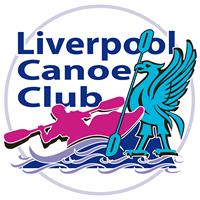Over the VHF, I have often heard marine traffic talking about Q1 and Q2, these being the outermost buoys of the Liverpool Approach. But where exactly are these places, and what are they like?
Given the huge amount of water that enters and leaves the Mersey Estuary, it makes sense for any return trip into Liverpool Bay to be based around low tide. Some degree of tidal assistance could then be expected in each direction. In these parts, low water only occurs around the middle of the day at neap tides. A calm summer’s day with a neap tide and a gentle onshore wind would seem ideal for such a trip.



On Thursday 17/8/17, these conditions came together nicely. A gentle Westerly wind was forecast to pick up during the afternoon and swing around to the Southwest. Paddling to Q1 from the Wirral would require being a long way from land for most of the time. An alternative option starting from Crosby looked to be more feasible. This trip would take in most of the port (red) buoys of the Crosby Channel, then lead around the corner into the Queens Channel and eventually to Q2. With this option, I would always be upwind of the coast which would never be too far away. Continuing northwards towards Ainsdale was my preference for the return trip.
I launched from Crosby shortly after 10am and paused at the first port buoy (C14) to inform Mersey VTS of my intentions. Aided by the ebbing tide, I then enjoyed a rapid tour of the buoys out towards Formby Point. Formby Buoy is a red & white affair in the centre of the channel, mid-way between the outer lines of port and starboard markers.
Close to C6 is some prominent wreckage. It’s hard to imagine a large metal ship meeting its fate on a sandbank. Looking at the Liverpool Approach chart at www.visitmyharbour.com, it is possible that this unfortunate vessel has encountered the Taylor’s Bank Revetment.
Interspersed with the lower numbered Crosby Channel markers are Gamma, Beta and Alpha. On arriving at Alpha, an outgoing tanker was approaching so I paused for a photo. As it drew level, I heard the skipper calling up Mersey VTS about his concern for a kayak that was nearby. He thought the bow wave from other vessels may cause me a problem. In the distance, I could see the fast-approaching Sea Cat and had no intention of venturing close to it on this occasion.
Mersey VTS then asked the Sea Cat whether s(he) had visual contact with me, the reply being negative. At that point, I again called in as “Kayak Robin” to confirm my location and said that I would remain well outside the channel and that no traffic needs to slow down for me. That input was immediately acknowledged by the VTS operator and was presumably welcomed by all concerned.
Arriving at Q12 – the first marker in the Queens Channel – was a special moment for me. By that time, it was 11:50, a little over two hours before low water. With pleasant conditions, it made no sense to turn back against the ebbing tidal flow so I pressed on. By this time, the Sea Cat had reported leaving the Queens Channel and was away, due back around 7pm.



Many of the Queens Channel buoys appear to be older than in the Crosby Channel, but they are prominent and easy to follow. Most were adorned with cormorants and gulls but they invariably flew off before coming into photo range. It was interesting to watch the tangle of mainly stationary wind turbines morph into distinct lines as I progressed.
Q2 is a smart tall affair as befits its status as the final port marker of the Shipping Channel. When I arrived, the sea state was slight and there was still some outgoing tidal drift. While enjoying a leisurely lunch, my boat drifted around 250 metres further out into the bay. It felt as if I had left the Solar System and was drifting around in interstellar space. Once back near Q2, with a friendly line of red buoys stretching shoreward, I felt more secure again.
During my return trip, the wind and swell increased markedly. At times, I found myself surfing and the boat’s direction was difficult to control. But with transits everywhere, there was no doubt that I was making progress in the right general direction. All of the wind turbines were by then in motion.
On arriving at Q12, I briefly turned downwind (NE) and found the conditions to be much easier. I therefore decided to continue to Ainsdale rather than returning to Crosby. With the water level being lower than on my outward trip, several pieces of marine wreckage could be seen around Formby sands. A hot drink on Formby beach was most welcome. The continuous expanse of beach and dunes past Freshfield and Woodvale Airfield is a lovely stretch of coast, with just a handful of people dotted around the place.
Toiling up the beach at Ainsdale was hard work. While taking a short train ride to retrieve the car, my kayak was hidden from view behind the Lifeguard’s hut. Thankfully, it remained undisturbed during my absence. For peace of mind, my VHF radio, PLB, GPS, phone, camera and compass all went with me in a rucksac. I even remembered to take the car key 🙂
View from Q2: https://youtu.be/Hh0ue2ZsrAE


